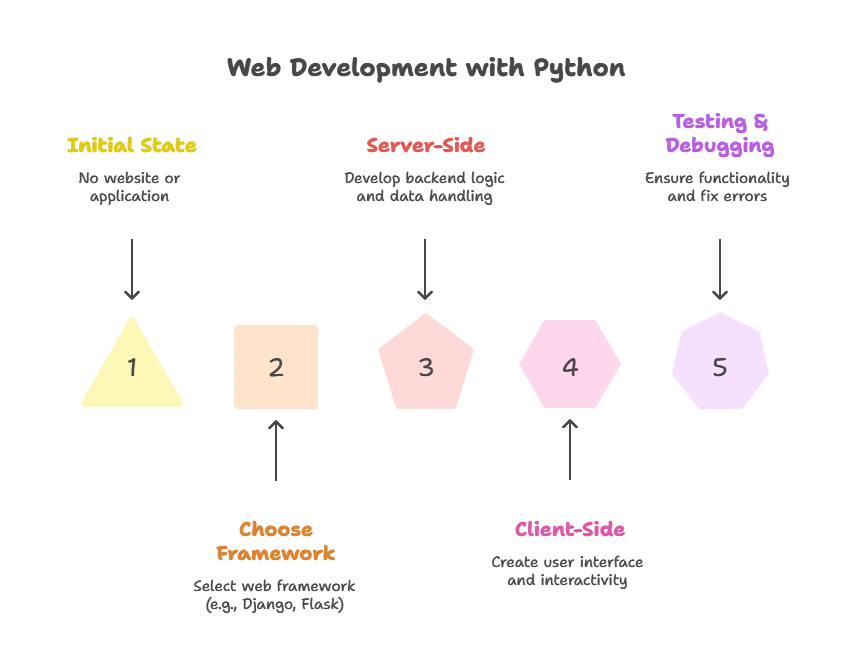Python for Web Development
Python has become a popular choice for web development due to its simplicity, versatility, and robust ecosystem of libraries and frameworks. In this topic, we'll explore how Python can be used to build dynamic and powerful web applications. From the basics of setting up a development environment to the advanced features of popular web frameworks like Flask and Django, Python provides developers with the tools they need to create scalable and efficient web solutions.
Introduction to Web Development with Python
What is Web Development?
Web development involves building websites and web applications using programming languages, frameworks, and tools. Python is a versatile language that can be used for both server-side and client-side web development.
Why Python for Web Development?
Python offers simplicity, readability, and a vast ecosystem of libraries and frameworks for web development. It’s widely used in web development due to its ease of use, scalability, and robustness.

Basics of Web Development with Python
Setting Up a Development Environment
To get started with web development in Python, you’ll need to set up a development environment. You can use tools like virtual environments and package managers to manage dependencies and project structure.
Flask vs. Django
Flask and Django are popular web frameworks in Python. Flask is lightweight and flexible, while Django is a full-featured framework with built-in features like ORM, authentication, and admin interface.
Getting Started with Flask
Installing Flask
You can install Flask using pip:
pip install Flask
Creating a Simple Web Application
Let’s create a simple web application using Flask:
from flask import Flask
app = Flask(__name__)
@app.route('/')
def hello():
return 'Hello, World!'
if __name__ == '__main__':
app.run()
Explanation:
- We import the Flask class from the
flaskmodule. - We create an instance of the Flask class with
__name__as the parameter. - We define a route for the root URL (
'/') and a corresponding view function that returns ‘Hello, World!’. - We run the Flask application using the
run()method.
Advanced Web Development with Flask
Templates and Jinja
Flask supports templates using the Jinja template engine. Templates allow for dynamic generation of HTML content, making it easier to create reusable and maintainable web applications.
Database Integration with Flask-SQLAlchemy
Flask-SQLAlchemy is a Flask extension that provides integration with SQLAlchemy, a powerful ORM for working with databases in Python. It simplifies database operations and allows for seamless integration with Flask applications.
Getting Started with Django
Installing Django
You can install Django using pip:
pip install Django
Creating a Django Project
Let’s create a new Django project:
django-admin startproject myproject
Creating a Django App
Let’s create a new Django app within the project:
python manage.py startapp myapp
Advanced Web Development with Django
Models, Views, and Templates (MVT)
Django follows the Model-View-Template (MVT) architecture. Models represent data, views handle request processing, and templates generate HTML responses.
Admin Interface
Django provides a built-in admin interface for managing site content. It allows for easy administration of models and database records without writing custom admin interfaces.
In this topic, we've explored how Python serves as a versatile and powerful language for web development. From its simplicity and readability to its robust ecosystem of libraries and frameworks, Python offers developers a wide range of tools and resources for building dynamic and scalable web applications. Happy coding! ❤️
